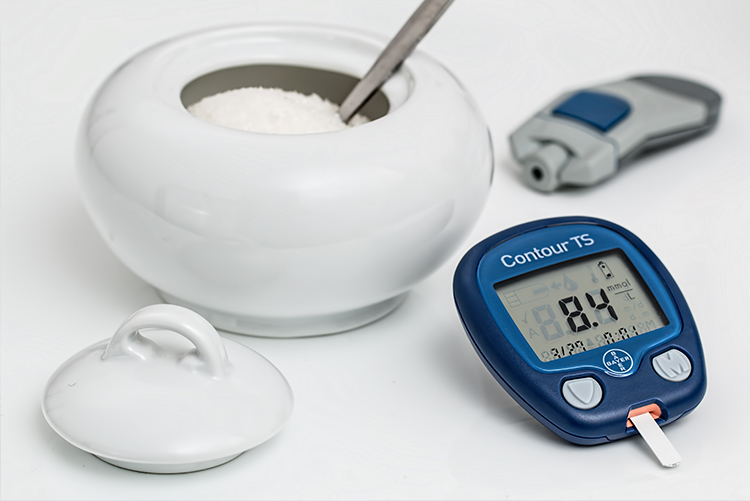Do You Know the Warning Signs of Type 2 Diabetes? (And What to Do After You Are Diagnosed)
May 20, 2019

You’ve heard the numbers...more than 30 million adults in the U.S. have diabetes. Another 85 million have pre-diabetes.
That means 40 percent of Americans (40 percent!) are battling the disease, which is an inability to use insulin effectively to help the body metabolise the sugar from the food we eat.
How do you tell if you’re one of them?Here are some common symptoms to look for:
You’re always thirsty.
You feel like you need to drink something all the time, but never feel satisfied.
You’re hungry — a lot.
Even if you’re literally eating, you still feel like you need to eat more. And you never feel full.
You’re often tired.
You feel fatigued and lethargic no matter how much sleep you’ve had.
You’re urinating often.
You’re using the restroom way more than seems normal.
You don’t heal well.
Cuts and bruises are slow to get better.
You hands and feet don’t feel right.
They tingle, feel numb or even are painful.
If you have some or all of those symptoms, contact your doctor right away.Ok, so let’s say the worst happens: You get diagnosed with Type 2 diabetes. What are your next steps?
1) You are not a failure.
First and foremost, know this: A diagnosis is not a reflection on who you are as a person. Despite what you may have heard or read, Type 2 Diabetes is not just a factor of weight. Genetics also play a role, as does lifestyle (stress, food, exercise, sleep, etc.). Ultimately Type 2 diabetes happens when your blood is resistant to insulin and produces too little insulin.
2) Embark on a treatment plan — immediately.
It may feel like it, but this diagnosis is not a death sentence. It is, however, serious — and something that requires your immediate attention. If you ignore it, it could lead to elevated glucose levels that damage your nervous system, eyes, heart and kidneys. It can also affect your mood and energy levels. The good news is managing the disease can stave off the possible side-effects.
3) Talk to your doctor about possible medications.
Since Type 2 Diabetes is a progressive disease, blood glucose management gets tougher and tougher. Proper diet and exercise can help, but talking with your doctor about which medications are available and which will work best for you is critical.
4) Eat a proper diet.
Food has a major impact on you blood glucose. The wrong kinds of carbs can wreak havoc on your blood sugar levels. Choose a diet loaded with healthy fats, fruits, vegetables and fiber is best. Control for portion, too, to be sure you’re not over-eating and making things worse.
(Need help? Our Balance Diabetes plan takes the thinking out of meal planning. It is heart-healthy and controlled for sodium, carbs, fat and cholesterol to help you manage your Type 2 Diabetes naturally.)
5) Embark on a fitness plan.
Exercise is a free drug — so why not use it? Done regularly (nearly every day) just about 30 minutes can lower blood glucose levels, help your body use insulin better and lower cholesterol. Find something you love to do and do it. Consistency is key.
6) Learn your glucose patterns.
Test your glucose meter — and test it often. Write down levels before and after certain events, like meals or a workout, to help determine what works, and what doesn’t, for you. These data points can help you create an optimal management plan.
7) Get support.
Your loved ones are critical at a time like this. Don’t keep your struggle to yourself. Turn to the people who care about you most and let them be there for you. Knowing that friends and family know what you’re going through will help you feel empowered to keep moving forward and getting better at handling the disease.
Do you have pre- or Type 2 Diabetes? What are some ways you manage it? Share in the comments below!
------------------------------------------------------------------------------------
Author: Caitlin H
Diet-to-Go Community Manager
Caitlin is the Diet-to-Go community manager and an avid runner. She is passionate about engaging with others online and maintaining a healthy, active lifestyle. She believes moderation is key, and people will have the most weight loss success if they engage in common-sense healthy eating and fitness.










